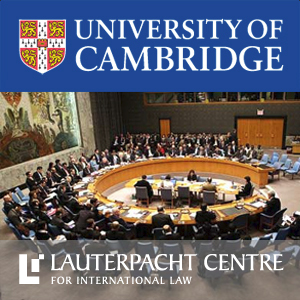'Arms Trade Treaty: Achievements, Failings, Future' by Professor Laurence Lustgarten
Duration: 45 mins 32 secs
Share this media item:
Embed this media item:
Embed this media item:
About this item

| Description: |
The Lauterpacht Centre for International Law (LCIL), University of Cambridge hosts a regular Friday lunchtime lecture series on key areas of International Law. Previous subjects have included UN peacekeeping operations, the advisory jurisdiction of the International Court of Justice, the crime of aggression, whaling, children and military tribunals, and theories and practices for proving individual responsibility criminal responsibility for genocide and crimes against humanity.
This lecture, entitled 'Arms Trade Treaty: Achievements, Failings, Future', was delivered at the Lauterpacht Centre on Friday, 30 October 2015 by Professor Laurence Lustgarten, Associate Research Fellow, Centre for Socio-Legal Studies, Oxford University. Professor Lustgarten was formerly Commissioner, IPCC, and Professor of Law, University of Southampton. Please note, the question and answer sections of LCIL lectures are omitted to facilitate a free and frank discussion with participants. For more information about the series, please see the Lauterpacht Centre website at http://www.lcil.cam.ac.uk |
|---|
| Created: | 2015-11-06 15:04 |
|---|---|
| Collection: | LCIL International Law Seminar Series MOVED |
| Publisher: | University of Cambridge |
| Copyright: | University of Cambridge |
| Language: | eng (English) |
| Keywords: | Arms Trade Treaty; International law; arms trade; |
| Abstract: | The Arms Trade Treaty, the first global legal instrument in history devoted to regulating the trade in conventional arms, came into force in December 2014. It was the product of more than a decade of campaigning, and of two separate sessions of hard negotiation and compromise. This talk will examine the multiple objections to the arms trade that led to the movement for international legal regulation; look at the major areas of dispute between key States in the negotiations; and then cast a critical eye on the central provisions of the Treaty. It concludes by summarizing the major weaknesses and omissions of the Treaty and evaluates its likely impact. |
|---|---|

